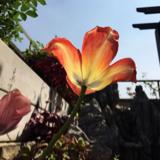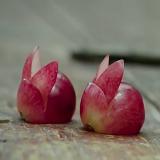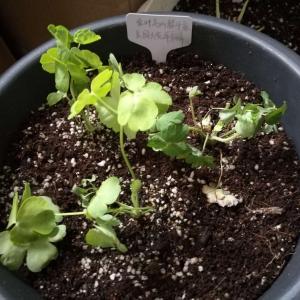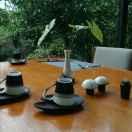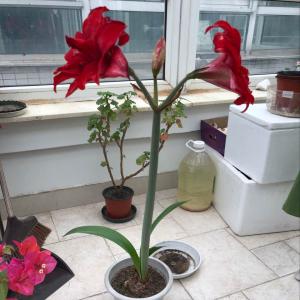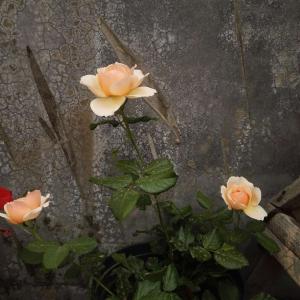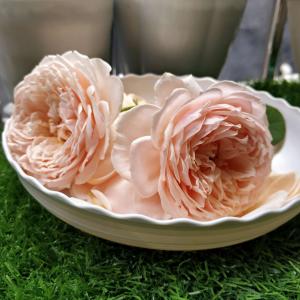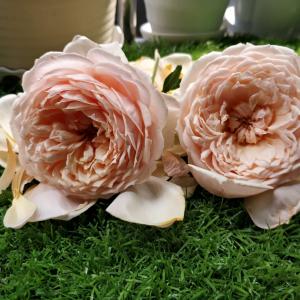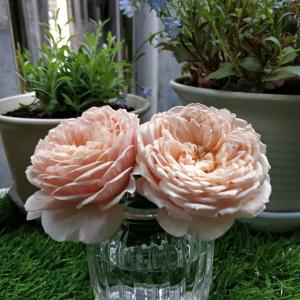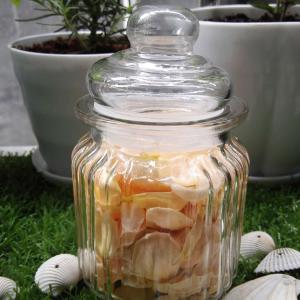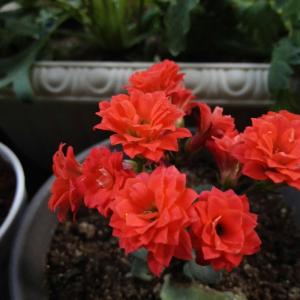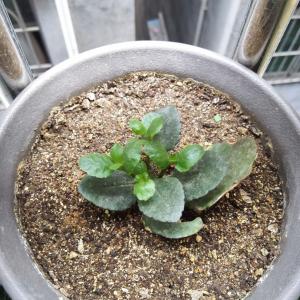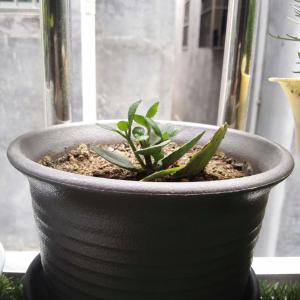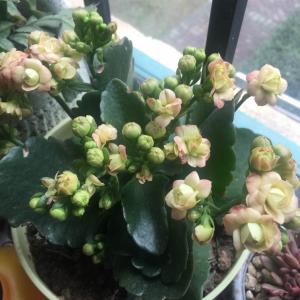文章
Miss Chen
2018年04月23日

Description: This herbaceous perennial plant produces a few basal leaves that are 1-4" long and a little less across; they are usually oval-cordate in shape and their margins are crenate-serrate. Less often, the basal leaves are trifoliate. The petioles of the basal leaves are slender and about 1-4" long. During the spring, a flowering plant develops that branches occasionally; it is about 1-3' tall. The stems of this plant are light green, terete, and glabrous, while its alternate leaves are trifoliate (rarely are they ternately trifoliate). The leaflets of these compound leaves are 1-2" long and about one-half as much across; they are lanceolate to ovate-lanceolate in shape and their margins are serrate-crenate. A few leaflets may be sharply divided into 1-2 lobes, but this is atypical. Both the basal leaves and leaflets of the alternate leaves have upper and lower surfaces that are green and glabrous. The petioles of the alternate leaves are less than 1" long; they are enveloped in sheaths. The petiolules (basal stalklets) of the terminal leaflets are ¼-1" long, while the petiolules of the lateral leaflets are less than ¼" long.
The upper stems terminate in compound umbels of flowers that span 1-3" across. Each compound umbel has 6-12 rays (floral stalks) that terminate in small umbellets of flowers; the rays are light green to pale purplish green, grooved along their upper sides, and glabrous. Each umbellet has 5-12 rays about 4 mm. long that terminate in individual flowers. Each flower is about 2-3 mm. across, consisting of 5 maroon (reddish purple) petals, a short green or purplish green calyx with 5 teeth, 5 stamens, and a 2-celled ovary with a pair of styles. The tips of the petals are strongly incurved toward the center of each flower. Underneath the compound umbel and each umbellet, there are 0-3 floral bracts. If these floralDistribution Map bracts are present, that are linear-lanceolate in shape, small in size, and early-deciduous. The blooming period occurs from mid-spring to early summer, lasting about 3-4 weeks. Afterwards, the flowers are replaced by small fruits about 4 mm. in length that are broadly ellipsoid-oblongoid in shape and strongly winged. Each fruit consists of a pair of carpels that each enclose a single seed. The carpels can be blown about by the wind to a limited extent. The root system consists of a taproot.
Cultivation: The preference is full sun to light shade, mesic to dry-mesic conditions, and practically any kind of soil, including those that contain clay-loam and rocky material.
Range & Habitat: The native Purple Meadow Parsnip occurs primarily in the southern half of Illinois, where it is uncommon, while in the northern half of the state it is rare or absent. It should be noted that the available distribution map does not distinguish between the two varieties of this species, Thaspium trifoliatum trifoliatum (Purple Meadow Parsnip) and Thaspium trifoliatum flavum (Yellow Meadow Parsnip). The latter variety is the more common of the two and its range extends further north. Habitats for both varieties consist of rocky upland woodlands, rocky bluffs, upland oak savannas, woodland borders and openings, prairies, streambanks, and roadsides.
Faunal Associations: The nectar and pollen of the maroon flowers attract primarily flies and beetles. Robertson (1929) observed a dance fly (Empis loripedis) sucking nectar from the flowers, while the author (or content partner) of this website observed an unidentified beetle feeding on the pollen. The caterpillars of two butterflies, Papilio polyxenes asterias (Black Swallowtail) and Papilio joanae (Ozark Swallowtail), feed on the foliage of Thaspium trifoliatum (Meadow Parsnip). Although the latter butterfly has not been observed in Illinois thus far, it has been found in neighboring Missouri. An aphid, Aphis thaspii, sucks juices from the umbels of the flowers.
Photographic Location: Along a roadside in southern Illinois.

Comments: Because of its striking maroon flowers, Purple Meadow Parsnip can be easily distinguished from other similar species in the Carrot family. This does not apply to the other variety of this species, Yellow Meadow Parsnip (Thaspium trifoliatum flavum), which has yellow flowers. In general, Meadow Parsnip (Thaspium trifoliatum) is very similar to Zizia aurea (Golden Alexanders) and Zizia aptera (Heart-Leaved Alexanders). However, the latter two species have fruits that are ribbed, rather than strongly winged, and the central flowers of their umbellets are sessile (or nearly so). Unlike Meadow Parsnip and Heart-Leaved Alexanders, the common Golden Alexanders has compound basal leaves and its alternate leaves are often ternately trifoliate. It also prefers habitats that are more moist.
The upper stems terminate in compound umbels of flowers that span 1-3" across. Each compound umbel has 6-12 rays (floral stalks) that terminate in small umbellets of flowers; the rays are light green to pale purplish green, grooved along their upper sides, and glabrous. Each umbellet has 5-12 rays about 4 mm. long that terminate in individual flowers. Each flower is about 2-3 mm. across, consisting of 5 maroon (reddish purple) petals, a short green or purplish green calyx with 5 teeth, 5 stamens, and a 2-celled ovary with a pair of styles. The tips of the petals are strongly incurved toward the center of each flower. Underneath the compound umbel and each umbellet, there are 0-3 floral bracts. If these floralDistribution Map bracts are present, that are linear-lanceolate in shape, small in size, and early-deciduous. The blooming period occurs from mid-spring to early summer, lasting about 3-4 weeks. Afterwards, the flowers are replaced by small fruits about 4 mm. in length that are broadly ellipsoid-oblongoid in shape and strongly winged. Each fruit consists of a pair of carpels that each enclose a single seed. The carpels can be blown about by the wind to a limited extent. The root system consists of a taproot.
Cultivation: The preference is full sun to light shade, mesic to dry-mesic conditions, and practically any kind of soil, including those that contain clay-loam and rocky material.
Range & Habitat: The native Purple Meadow Parsnip occurs primarily in the southern half of Illinois, where it is uncommon, while in the northern half of the state it is rare or absent. It should be noted that the available distribution map does not distinguish between the two varieties of this species, Thaspium trifoliatum trifoliatum (Purple Meadow Parsnip) and Thaspium trifoliatum flavum (Yellow Meadow Parsnip). The latter variety is the more common of the two and its range extends further north. Habitats for both varieties consist of rocky upland woodlands, rocky bluffs, upland oak savannas, woodland borders and openings, prairies, streambanks, and roadsides.
Faunal Associations: The nectar and pollen of the maroon flowers attract primarily flies and beetles. Robertson (1929) observed a dance fly (Empis loripedis) sucking nectar from the flowers, while the author (or content partner) of this website observed an unidentified beetle feeding on the pollen. The caterpillars of two butterflies, Papilio polyxenes asterias (Black Swallowtail) and Papilio joanae (Ozark Swallowtail), feed on the foliage of Thaspium trifoliatum (Meadow Parsnip). Although the latter butterfly has not been observed in Illinois thus far, it has been found in neighboring Missouri. An aphid, Aphis thaspii, sucks juices from the umbels of the flowers.
Photographic Location: Along a roadside in southern Illinois.

Comments: Because of its striking maroon flowers, Purple Meadow Parsnip can be easily distinguished from other similar species in the Carrot family. This does not apply to the other variety of this species, Yellow Meadow Parsnip (Thaspium trifoliatum flavum), which has yellow flowers. In general, Meadow Parsnip (Thaspium trifoliatum) is very similar to Zizia aurea (Golden Alexanders) and Zizia aptera (Heart-Leaved Alexanders). However, the latter two species have fruits that are ribbed, rather than strongly winged, and the central flowers of their umbellets are sessile (or nearly so). Unlike Meadow Parsnip and Heart-Leaved Alexanders, the common Golden Alexanders has compound basal leaves and its alternate leaves are often ternately trifoliate. It also prefers habitats that are more moist.
0
0
文章
Miss Chen
2018年04月22日

Description: This is a perennial plant about 1-3' tall that branches occasionally, often leaning toward one side. The stems are light green or reddish brown, and they have lines of white hairs. The alternate leaves are up to 4½" long and ½" across, becoming much smaller as they ascend the stems. They are narrowly lanceolate, oblanceolate, or elliptic, becoming linear near the flowerheads. There are usually a few teeth toward the tips of the larger leaves, otherwise they have smooth margins. Some hairs may be present along the major veins on the undersides of the leaves. The upper leaf surface is medium green, while the lower leaf surface is light green. The upper stems and some of the side stems produce panicles of flowerheads up to 10" long and 6" across. Each flowerhead has numerous small disk florets that are surrounded by about 8-12 ray florets. The corollas of the disk florets are initially pale yellow, but they later become brown or reddish purple; they are short-tubular in shape and 5-lobed. The petaloid rays are white and linear-oblong in shape. A typical flowerhead is about 1/3" (8 mm.) across. Each flowerhead is subtended by small green bracts (phyllaries) that are appressed together, or they are only slightly spreading.
The blooming period occurs from late summer to the fall, lasting about 1-2 months. There is little or no floral scent. The small achenes are slightly pubescent and they have small tufts of white hair. Distribution of the achenes is by wind. The root system is fibrous and rhizomatous; an older plant may develop a small caudex. Clonal offsets occasionally develop from the rhizomes. This plant occasionally forms colonies at favorable sites.
Cultivation: The preference is light shade to partial sun and moist conditions. Full sun is tolerated if the site is not too dry. Growth is best in rich organic soil, or a moisture retaining clay-loam. During dry weather, the lower leaves often wither away, and stressed out plants are vulnerable to many kinds of foliar disease.

Range & Habitat: The native Calico Aster occurs in most counties of Illinois, where it is native and quite common (see Distribution Map). Habitats include moist meadows near woodlands and rivers, floodplain forests and flatwoods, woodland borders, seeps and swamps, semi-shaded sloughs near fields, and moist depressions in waste areas. This plant is primarily a woodland species, but it often strays into moist sunny areas nearby. It prefers areas with a history of disturbance.
Faunal Associations: The florets of Calico Aster have shorter nectar tubes than many other species of asters, and they seem to attract a wide variety of insects, particularly in sunny areas. More common insect visitors include short-tongued bees, wasps, and flies, and less common visitors include long-tongued bees, small butterflies, skippers, beetles, and plant bugs. These insects seek nectar primarily, although the short-tongued bees may collect pollen, while some beetles and flies feed on the pollen. Caterpillars of the butterflies, Chlosyne nycteis (Silvery Checkerspot) and Phyciodes tharos (Pearl Crescent), feed on the foliage of asters (Symphyotrichum spp.), as do the caterpillars of many kinds of moths (see Moth Table). The White-Tailed Deer and Cottontail Rabbit browse on the foliage occasionally.

Photographic Location: The photographs were taken at the webmaster's wildflower garden in Urbana, Illinois.
Comments: This aster is more attractive in woodland areas, where it has a delicate appearance. It closely resembles Symphyotrichum pilosum (Frost Aster), Symphyotrichum ericoides (Heath Aster), and other species in the genus with small white flowerheads. The Calico Aster (Symphyotrichum lateriflorum) is a somewhat lanky plant with smaller flowerheads (about 1/3" or 8 mm. across) and fewer ray florets per flowerhead (about 10) than many similar asters (Symphyotrichum spp.). In this regard, it is similar to the Heath Aster, but the latter species is a more compact plant with leaves that are shorter and more narrow than those of the Calico Aster. While the Heath Aster is often found in open prairies, the Calico Aster usually doesn't stray far from woodland and semi-shaded wetland areas. Its common name refers to the diverse colors of the disk florets as they mature. Another common name of this species is the Side-Flowering Aster, and another scientific name is Aster lateriflorus.
The blooming period occurs from late summer to the fall, lasting about 1-2 months. There is little or no floral scent. The small achenes are slightly pubescent and they have small tufts of white hair. Distribution of the achenes is by wind. The root system is fibrous and rhizomatous; an older plant may develop a small caudex. Clonal offsets occasionally develop from the rhizomes. This plant occasionally forms colonies at favorable sites.
Cultivation: The preference is light shade to partial sun and moist conditions. Full sun is tolerated if the site is not too dry. Growth is best in rich organic soil, or a moisture retaining clay-loam. During dry weather, the lower leaves often wither away, and stressed out plants are vulnerable to many kinds of foliar disease.

Range & Habitat: The native Calico Aster occurs in most counties of Illinois, where it is native and quite common (see Distribution Map). Habitats include moist meadows near woodlands and rivers, floodplain forests and flatwoods, woodland borders, seeps and swamps, semi-shaded sloughs near fields, and moist depressions in waste areas. This plant is primarily a woodland species, but it often strays into moist sunny areas nearby. It prefers areas with a history of disturbance.
Faunal Associations: The florets of Calico Aster have shorter nectar tubes than many other species of asters, and they seem to attract a wide variety of insects, particularly in sunny areas. More common insect visitors include short-tongued bees, wasps, and flies, and less common visitors include long-tongued bees, small butterflies, skippers, beetles, and plant bugs. These insects seek nectar primarily, although the short-tongued bees may collect pollen, while some beetles and flies feed on the pollen. Caterpillars of the butterflies, Chlosyne nycteis (Silvery Checkerspot) and Phyciodes tharos (Pearl Crescent), feed on the foliage of asters (Symphyotrichum spp.), as do the caterpillars of many kinds of moths (see Moth Table). The White-Tailed Deer and Cottontail Rabbit browse on the foliage occasionally.

Photographic Location: The photographs were taken at the webmaster's wildflower garden in Urbana, Illinois.
Comments: This aster is more attractive in woodland areas, where it has a delicate appearance. It closely resembles Symphyotrichum pilosum (Frost Aster), Symphyotrichum ericoides (Heath Aster), and other species in the genus with small white flowerheads. The Calico Aster (Symphyotrichum lateriflorum) is a somewhat lanky plant with smaller flowerheads (about 1/3" or 8 mm. across) and fewer ray florets per flowerhead (about 10) than many similar asters (Symphyotrichum spp.). In this regard, it is similar to the Heath Aster, but the latter species is a more compact plant with leaves that are shorter and more narrow than those of the Calico Aster. While the Heath Aster is often found in open prairies, the Calico Aster usually doesn't stray far from woodland and semi-shaded wetland areas. Its common name refers to the diverse colors of the disk florets as they mature. Another common name of this species is the Side-Flowering Aster, and another scientific name is Aster lateriflorus.
0
0
文章
Miss Chen
2018年04月22日

Description: From late fall to spring, this perennial wildflower exists as a small basal rosette of leaves spanning up to 4½" across. As warmer weather arrives, it bolts, developing one or more flowering stems that are 1-3' long. These stems can be erect, ascending, or sprawling; they are sparingly branched, slender, light green, terete, and glabrous. Alternate leaves along the stems are about 1½–3" long and 1/8–1/4" (3-6 mm.) across; they are linear-lanceolate or narrowly elliptic, medium green, glabrous, and sessile. The leaf margins are either rolled inward and smooth or shallowly and sparingly toothed. Each alternate leaf has a single central vein that is prominent.
The central stem (and any lateral stems) terminates in a rather airy panicle of flowerheads about 6-9" long and a little less across. Generally, the flowerheads are more or less erect in relation to the panicle, which often leans sideways to some extent; the flowerheads are not secund (always facing upward away from the ground). The ascending branches of the panicle are slender, light green, and glabrous. Individual flowerheads develop from terminal branches that are usually ½" or more in length. Several small leafy bracts occur along the terminal branches; these bracts are linear in shape and less than ¼" in length. Larger leafy bracts can occur on non-terminal branches. Each flowerhead is about ½" across, consisting of 15-25 white ray florets and 10-20 yellow disk florets; the disk florets later become reddish purple. At the base of each flowerhead, thereDistribution Map are small appressed floral bracts in 3-5 series that surround the involucre; this involucre is 3-6 mm. long. The floral bracts have dark green tips, otherwise they are light green; these dark green tips are rhombic-obovate or rhombic-oblanceolate in shape. The blooming period occurs from late summer to early fall and lasts about 1 month. The florets are replaced by small achenes with sessile tufts of white hair, which are distributed by the wind. Individual achenes are bullet-shaped with 3-5 prominent ribs and they are pale pink to straw-colored. The root system is fibrous and rhizomatous; on an older plant, a small caudex may develop. Vegetative offsets are sometimes formed by the rhizomes.
Cultivation: The preference is full or partial sun, moist to dry-mesic conditions, and sandy soil. Individual plants may lean to the side when they bloom.
Range & Habitat: The native Rice Button Aster is an uncommon plant that is found primarily in sandy areas of NE Illinois; elsewhere in the state, it is rare or absent. Illinois lies close to the northern range limit of this species. Habitats include dry-mesic sandy savannas, interdunal swales, moist meadows, areas along sandy paths, and abandoned fields. Rather oddly, Rice Button Aster gravitates toward either fairly dry or poorly drained habitats.
Faunal Associations: The nectar and pollen of the flowerheads attract numerous insects, including long-tongued bees, short-tongued bees, wasps, flies, butterflies, skippers, and beetles. Among the bees, honeybees, bumblebees, green metallic bees, dagger bees (e.g., Calliopsis), and oligolectic Andrenid bees (e.g., Andrena asteroides) are known to visit the flowerheads of Rice Button Aster. For many of these insect visitors, Symphyotrichum spp. (Asters) are an important source of late-season nectar and pollen. Other insects feed on the foliage, suck plant juices, bore through the stalks and roots, or gnaw on the flowerheads and developing seeds. These insects include long-horned beetles, leaf beetles, aphids, leafhoppers, lace bugs, plant bugs, fly larvae (Cecidomyiidae), and caterpillars of butterflies and moths. The Wild Turkey occasionally feeds on the leaves and seedheads, while White-Tailed Deer and the Cottontail Rabbit browse on the foliage.
Photographic Location: A sandy savanna at Hooper Branch Savanna Nature Preserve in Iroquois County, Illinois.

Comments: This is one of many white-flowered asters that can be found in Illinois. Rice Button Aster is a slender and delicate-looking plant that is rather variable across its range: different varieties have been described. It is perhaps most similar in appearance to Symphyotrichum racemosum (syn. Symphyotrichum vimineum, syn. Symphyotrichum fragile), which also has small white flowerheads. The latter species differs from Rice Button Aster by its slightly smaller flowerheads (1/3" or 8 mm. across); these flowerheads are more secund (facing upward away from the ground) and they are usually produced in greater abundance. Furthermore, the terminal branches of its flowerheads are usually shorter than those of the Rice Button Aster. An alternative scientific name of Rice Button Aster is Aster dumosus.
The central stem (and any lateral stems) terminates in a rather airy panicle of flowerheads about 6-9" long and a little less across. Generally, the flowerheads are more or less erect in relation to the panicle, which often leans sideways to some extent; the flowerheads are not secund (always facing upward away from the ground). The ascending branches of the panicle are slender, light green, and glabrous. Individual flowerheads develop from terminal branches that are usually ½" or more in length. Several small leafy bracts occur along the terminal branches; these bracts are linear in shape and less than ¼" in length. Larger leafy bracts can occur on non-terminal branches. Each flowerhead is about ½" across, consisting of 15-25 white ray florets and 10-20 yellow disk florets; the disk florets later become reddish purple. At the base of each flowerhead, thereDistribution Map are small appressed floral bracts in 3-5 series that surround the involucre; this involucre is 3-6 mm. long. The floral bracts have dark green tips, otherwise they are light green; these dark green tips are rhombic-obovate or rhombic-oblanceolate in shape. The blooming period occurs from late summer to early fall and lasts about 1 month. The florets are replaced by small achenes with sessile tufts of white hair, which are distributed by the wind. Individual achenes are bullet-shaped with 3-5 prominent ribs and they are pale pink to straw-colored. The root system is fibrous and rhizomatous; on an older plant, a small caudex may develop. Vegetative offsets are sometimes formed by the rhizomes.
Cultivation: The preference is full or partial sun, moist to dry-mesic conditions, and sandy soil. Individual plants may lean to the side when they bloom.
Range & Habitat: The native Rice Button Aster is an uncommon plant that is found primarily in sandy areas of NE Illinois; elsewhere in the state, it is rare or absent. Illinois lies close to the northern range limit of this species. Habitats include dry-mesic sandy savannas, interdunal swales, moist meadows, areas along sandy paths, and abandoned fields. Rather oddly, Rice Button Aster gravitates toward either fairly dry or poorly drained habitats.
Faunal Associations: The nectar and pollen of the flowerheads attract numerous insects, including long-tongued bees, short-tongued bees, wasps, flies, butterflies, skippers, and beetles. Among the bees, honeybees, bumblebees, green metallic bees, dagger bees (e.g., Calliopsis), and oligolectic Andrenid bees (e.g., Andrena asteroides) are known to visit the flowerheads of Rice Button Aster. For many of these insect visitors, Symphyotrichum spp. (Asters) are an important source of late-season nectar and pollen. Other insects feed on the foliage, suck plant juices, bore through the stalks and roots, or gnaw on the flowerheads and developing seeds. These insects include long-horned beetles, leaf beetles, aphids, leafhoppers, lace bugs, plant bugs, fly larvae (Cecidomyiidae), and caterpillars of butterflies and moths. The Wild Turkey occasionally feeds on the leaves and seedheads, while White-Tailed Deer and the Cottontail Rabbit browse on the foliage.
Photographic Location: A sandy savanna at Hooper Branch Savanna Nature Preserve in Iroquois County, Illinois.

Comments: This is one of many white-flowered asters that can be found in Illinois. Rice Button Aster is a slender and delicate-looking plant that is rather variable across its range: different varieties have been described. It is perhaps most similar in appearance to Symphyotrichum racemosum (syn. Symphyotrichum vimineum, syn. Symphyotrichum fragile), which also has small white flowerheads. The latter species differs from Rice Button Aster by its slightly smaller flowerheads (1/3" or 8 mm. across); these flowerheads are more secund (facing upward away from the ground) and they are usually produced in greater abundance. Furthermore, the terminal branches of its flowerheads are usually shorter than those of the Rice Button Aster. An alternative scientific name of Rice Button Aster is Aster dumosus.
0
0
Angelina919646
2018年04月21日

晚上才回家,伺候完一堆花和丫丫基本过了快两小时,时间真快。4月14号把网上买的满天星种子撒了,哈哈,今天看到三棵芽,应该不是杂草嘛哈哈。第三个是蔷薇,买的时候一个花苞没有,现在已经好多苞,一两天就等不及要开的架势,居然是黄色的!外面的蔷薇好像都是粉色,我蠢!月季开得最不要脸啊,一天一朵,大的离奇,最后张圆圆的,好好看。今天去基地起苗,顺便带了几棵尚菊回来种试试,到家已经晒成这个鬼样子,不知道能不能活过来,没有花盆了,将就先插这么密,活了再分株,这个菊花成品太美啊!倒数第二的芍药,买玫瑰花老板送的,随便丢瓶子里插着,七天,今天也是含苞待放的样子。都很美,再忙也要好好对你们。
















2
0


